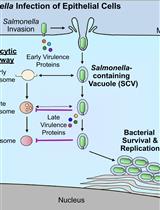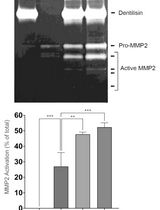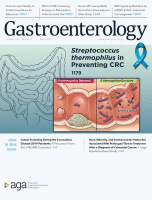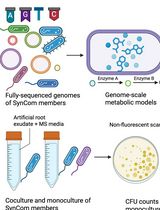- EN - English
- CN - 中文
Assessing Swarming of Aerobic Bacteria from Human Fecal Matter
人类粪便中需氧细菌群集的评估
(*contributed equally to this work) 发布: 2021年05月05日第11卷第9期 DOI: 10.21769/BioProtoc.4008 浏览次数: 3757
评审: Juan Facundo Rodriguez AyalaAna S. AlmeidaAnonymous reviewer(s)

相关实验方案

细菌病原体介导的宿主向溶酶体运输的抑制:基于荧光显微镜的DQ-Red BSA分析
Mădălina Mocăniță [...] Vanessa M. D'Costa
2024年03月05日 2824 阅读

通过制备连续聚丙烯酰胺凝胶电泳和凝胶酶谱分析法纯化来自梭状龋齿螺旋体的天然Dentilisin复合物及其功能分析
Pachiyappan Kamarajan [...] Yvonne L. Kapila
2024年04月05日 1989 阅读
Abstract
Swarming – swift movement across a surface via flagella propulsion – is a unique property of many bacteria. The role of swarming, particularly among bacterial populations of the human gut microbiome, is not yet fully understood; although, it is becoming an area of increased scientific and clinical inquiry. To further characterize bacterial swarming in human health, an effective assay for swarming that utilizes complex material, such as fecal matter, is necessary. Until now, the vast majority of swarming assays have only been able to accommodate bacteria grown in culture, most often Pseudomonas. These assays tend to use a standard lysogenic broth (LB) agar medium; however, the reagents involved have not been tailored to the inoculation of complex material. In this paper, we offer a specialized protocol for eliciting the swarming of bacteria from frozen human fecal samples. We describe the simple, yet reproducible steps required to perform the assay, identifying an ideal volume of 7.5 μl for inoculation of material, as well as an ideal agar concentration of 0.4%. This protocol typically allows researchers to identify swarming within 24 h after incubation in a standard incubator.
Keywords: Bacterial swarming (细菌群集)Background
Swarming is a unique bacterial property that ensures mass movement across a surface in a collective fashion (Verstraeten et al., 2008; Kearns, 2010). The exact host consequences of bacteria that swarm are not yet fully known; however, recent research has aimed to elucidate such a role in pathogenesis (Barak et al., 2009). It has been theorized that swarming enables bacteria to adhere to and disperse from localized spots of infection (Kearns, 2010), as well as to escape engulfment by macrophages (Amendola, 1998). For instance, the swarming of Proteus mirabilis has been implicated in catheter-associated urinary tract infections (Jones et al., 2004). Moreover, bacteria of many species become resistant to a range of antibiotics when they swarm, in a manner that appears unrelated to normal antibiotic efflux mechanisms (Butler et al., 2010).
More recently, our group has shown for the first time that swarming bacterial activity from human fecal matter is a specific indicator of intestinal inflammation and/or polyp formation (De et al., 2021). This represents a novel advancement since patient feces may now be used to inform clinicians in the assessment of “vague abdominal” symptoms among patients at risk for inflammatory bowel disease, ulcerative colitis, and polyps, among other conditions. This knowledge could help to guide clinical decision-making, such as determining which patients need a colonoscopy and further evaluation versus those who do not, ultimately reducing overall healthcare costs. As a result, the importance of optimizing an assay that detects swarming bacteria from feces is critical to the validation of our findings. Thus far, assays that focus on detecting swarming bacteria have been restricted to the study of cultured single strains of bacteria, namely Pseudomonas (Tremblay et al., 2008; Morris et al., 2011; Ha et al., 2014; Morales-soto et al., 2015). Ha et al., (2014), Morris et al., (2011), and Tremblay et al., (2008) describe thorough protocols for assaying bacterial swarming in Pseudomonas aeruginosa (Tremblay and Deziel, 2008; Morris et al., 2011; Ha et al., 2014); however, little, if any, attention has been focused on designing a protocol for eliciting bacterial swarming from human fecal samples, which are often the most convenient materials from which researchers can learn more about the microbial communities of the human gut. In this protocol, which we used in our group’s recent publication in De et al. (2021), we describe an assay to observe swarming in the shortest amount of time and with the least consumption of laboratory reagents. To the best of our knowledge, this is the first comprehensive description and optimization of an assay protocol that detects swarming bacteria from fecal matter.
Materials and Reagents
Petri dish, stackable lid, 100 mm × 15 mm, sterile, polystyrene (Fisherbrand, Fisher Scientific, catalog number: FB0875713)
Fecal specimen collection cup, 650 ml (Fisherbrand, Commode Specimen Collection System, catalog number: 23-038032)
Microcentrifuge tube, 1.5 ml (Fisherbrand, Fisher Scientific, catalog number: 05-408-130)
Adjustable 0.5-10 μl pipette (Eppendorf Research, catalog number: EPPR4402)
10 μl pipette Tips, racked, sterile (Thomas Scientific, catalog number: 1148U48)
Agar, bacteriological grade (Research Products International, CAS number: 9002-18-0)
Sodium chloride (Fischer Chemicals, Fisher Scientific, CAS number: 7647-14-5)
Tryptone, microbiologically tested (Sigma-Aldrich, CAS number: 91079-40-2)
Yeast extract (Acumedia, Neogen Corporation, catalog number: 7184B)
Distilled water (Thermo Fisher Scientific, catalog number: 15230001)
Agar LB plates (see Recipes)
Note: All materials and reagents are stored at room temperature.
Equipment
Epson Expression 1600 Scanner (Epson, Expression 1600, catalog number: E1600-PRO)
Incubator (Thermo Scientific, NAPCO Series 8000DH Incubator, catalog number: 3541)
-80°C freezer (Thermo Fisher Scientific, Revco ExF, catalog number: EXF40086D)
Autoclave (Amsco Scientific, Eagle, catalog number: SV120)
Hotplate (Thermolyne, Cimarec, catalog number: HP131225)
Biological hood (Thermo Fisher Scientific, 1300 Series Class II, Biological Safety Cabinet, catalog number: 1353)
Software
ImageJ Version 1.59e (National Institutes of Health, https://imagej.nih.gov/ij/download.html)
Procedure
文章信息
版权信息
© 2021 The Authors; exclusive licensee Bio-protocol LLC.
如何引用
Byju, A. S., Patel, D., Chen, W. and Mani, S. (2021). Assessing Swarming of Aerobic Bacteria from Human Fecal Matter. Bio-protocol 11(9): e4008. DOI: 10.21769/BioProtoc.4008.
分类
微生物学 > 微生物-宿主相互作用 > 细菌
细胞生物学 > 细胞运动 > 细胞运动性
您对这篇实验方法有问题吗?
在此处发布您的问题,我们将邀请本文作者来回答。同时,我们会将您的问题发布到Bio-protocol Exchange,以便寻求社区成员的帮助。
Share
Bluesky
X
Copy link










